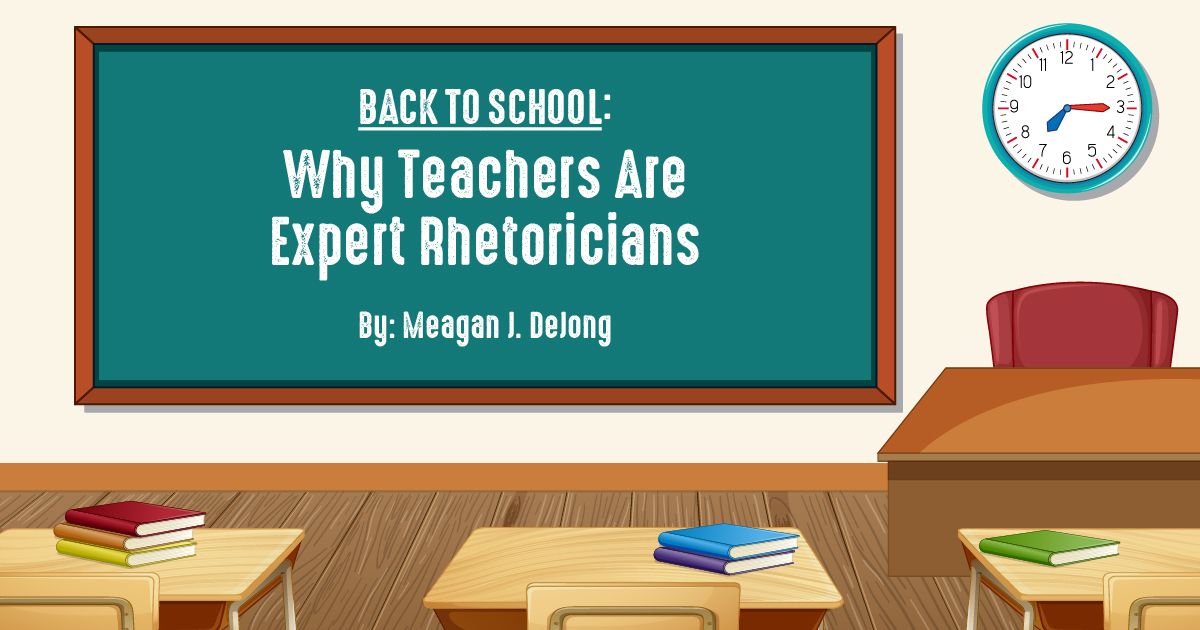Speak to any teacher in your life and you’ll hear lots of stories. Teachers are excellent storytellers and usually have some excellent stories to tell: some cringey, some inspirational, some that are kind of terrible. Many of the best teachers, without realizing it, are also expert rhetoricians–people who have mastered the art of persuasion. As a former professor myself, I can tell you that perhaps the two skills teachers have mastered above all others are the abilities to build investment and to effortlessly project authenticity.
Have a seat in my lecture hall, won’t you? Let’s examine and deconstruct the ways in which teachers are experts at the art of knowing their audience over a three-part “back to school” series that will also allow us to revisit some basics of audience engagement.
If you haven’t noticed, teachers have it tough. Their challenges are many and varied, some are new and others have existed as long as the modern classroom has existed. One such challenge is the challenge of getting students (or, in the context of marketing and advertising, consumers or clients) invested in the topic you are teaching (or, for our purposes, the product or service you’re selling) without deep mistrust, audible groans, and/or overwhelming cynicism.
Among many other carefully cultivated skills, teachers are also required to be exceptionally creative marketing mavens without a shred of inauthentic nonsense visible within their carefully constructed, impenetrable classroom cloak. That inauthentic nonsense, which we have a more colloquial word for in our vernacular, has a stench that can be smelled a mile away by any thirteen-year-old. If teens pick up even a whiff, it’s game over for the teacher, and likely not just for a week or a marking period, but for the entire academic year, often for 100+ students, they’re teaching in 7 separate classes. But hey, no pressure.
While I can’t speak for all teachers, I can certainly speak to my own experience and those of my friends and former colleagues. I’ll offer a secret that the best teachers know about investment and authenticity. Ready?
It cannot be faked.
I know that seems like it can’t be that simple, but it’s true.
I don’t care if you’re the best marketer, the smoothest salesperson, or the most charming individual ever to grace the classroom (or sales call, or meeting). If you’re lying, your audience will know. If you’re pretending, they’ll know. And worse, if you treat them as if there’s no possible way they could be aware of your lying and pretending, if you condescend and miscalculate, well…you might as well exit, stage left.
Teachers must be unabashedly, transparently themselves. Anything less spells utter disaster. How do they pull it off? They know their audience and carefully frame their rhetoric accordingly while building a forcefield of personal resiliency the likes of which most people have never seen, let alone painstakingly constructed.
Much like the writing process itself, for a teacher, the process of building investment and authenticity among an audience is recursive in nature. It begins and ends with seeking to know yourself and your service (or product, organization, or brand) deeply, and requires a lot of meaningful (and sometimes uncomfortable) work. LMDers know this well, and it’s reflected in the work we all do.
In my next blog in this series, I’ll break down that meaningful work of facilitating audience engagement and connection into five steps, all of them dependent on constant revision. In the meantime, examine your own essential steps to audience investment and engagement: what’s indispensable, and what can be left out of your own process?
Meagan supports LMD's work with the Cybersecurity and Infrastructure Security Agency (CISA) as a writer using her nearly two decades of experience. Meagan has an intuitive understanding of audience and rhetorical narrative that she has developed over many years through a unique blend of empathy and expertise.
Meagan graduated from Montclair State University with an M.A. in English writing studies and a graduate certificate in teaching writing. She earned a B.A. in English from Centenary College.
